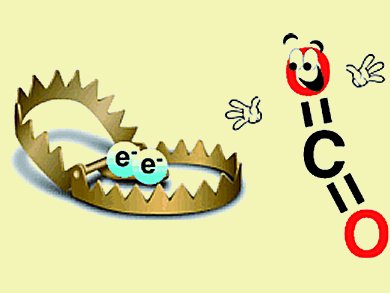The role of CO2 as a greenhouse gas has prompted widespread efforts for carbon capture. A number of strategies have been developed to sequester CO2 using materials such as alumina, silica, zeolites, activated carbon, and metal-organic frameworks (MOFs).
Douglas W. Stephan and colleagues, University of Toronto, Ontario, Canada, describe the syntheses of aminophosphonium salts, which incorporate Lewis basic and acidic pnictogen functionalities within an intramolecular system. These species serve as hypothetical intermediates for the generation of ring-strained amidophosphoranes.
Two of the prepared amidophosphoranes contain highly reactive P–N bonds within the four-membered rings. They react rapidly with CO2, resulting in relief of ring strain. These compounds demonstrate the utility of phosphorus as a Lewis acid for small-molecule activation.
- Phosphorus as a Lewis Acid: CO2 Sequestration with Amidophosphoranes,
Lindsay J. Hounjet, Christopher B. Caputo, Douglas W. Stephan,
Angew. Chem. Int. Ed. 2012, 51.
DOI: 10.1002/anie.201201422




